"My family and I visit Granville Island a lot. I've gone there to celebrate birthdays, achievements, and just to hang out with my family. When I was 5, my mom would take me there all the time and I would usually drag my mom to the kids market to play in the arcade room. As I got older, we would visit Granville Island less and less and today I visit it once or twice a month, but I still go to the kids market even though I am way older than most of the kids there. My mom and I mainly visit Granville Island to buy pate and eat the delicious hot dogs they serve, nevertheless, it is still fun to walk around."
Before There Was an Island
What is now Granville Island was once nothing more than two sandbars, that would appear and disappear with the tide. The area was inhabited seasonally by indigenous people, who would use the sandbars for fishing, catching shellfish and gatherings. Eventually, a permanent village was created near the sandbars, called Sen̓áḵw in Sḵwx̱wú7mesh (Squamish language), or sən̓aʔqʷ in hən̓q̓əmin̓əm̓ (Musqueam language). In 1869 a small reserve was created in False Creek, east of the sandbars, and in by 1899, residents were being forced to leave the area completely.
Industrial Island
By the 1870s, settlers had established sawmills and logging roads on either side of the False Creek, and when the first Granville Bridge connected the shores of False Creek in 1889, the south side became even more desirable. As building in the area ballooned in the following decades it became apparent that new affordable land with access to water for industry was desperately needed. The CPR, government and local businessmen fought over the sandbars and water rights until 1916, when it was transferred to the National Harbour Commission (NHC). The NHC quickly built a seawall around the sandbars, filled it with mud sucked from the bed of False Creek, and built a wooden road and railway to the island. About 40 acres of leasable land was created and businesses, mostly factories and mills, were quick to move in, building post and beam structures clad in corrugated tin. It was called Industrial Island, and at its height in the 1930s, there were 1200 people employed by 40 industrial companies, which manufactured and supplied fibre, rope, chain, and materials for logging, mining and shipping. The Depression years saw a decline in industry, but WWII reinvigorated the island, and industries switched to manufacturing defense equipment, employing women for the first time. It was during the war years that the name Granville Island started to be used.
Decline of Industry
With the end WWII came the slow decline of industry on the island. Trucking was becoming the more common method of transportation for industries, and water access was less in demand. There were a series of fires in the 1950s, and the island had become so run-down that it was easier for companies to move away than to fix up their buildings, and industries were moving to the suburbs en masse. It was also in these years that Granville Island stopped being an island; plans to fill in False Creek got as far as filling in what is now the Sutcliffe park area, connecting Granville Island to the mainland permanently.
Revitalization
By the 1970s, it was clear something had to be done about neglected Granville Island, and Liberal minister Ron Basford was one of the driving forces behind the proposed revitalization. The Canadian Housing and Mortgage Corporation (CMHC) was working on the redevelopment of south False Creek, and in 1973, took ownership of Granville Island. The age of industry was coming to an end in False Creek, and it was becoming a new type of community, with plans for residential and recreational uses. The renewal of Granville Island began with the expectation that the island would become a “people place,” existing buildings would be reused as much as possible, and the industrial maritime heritage would be retained.
The overall plan for Granville Island’s revitalization was designed by Joost Bakker and Norman Hotson of DIALOG. Because the island was not under the jurisdiction of the City of Vancouver, unique aspects like the unseparated foot and road traffic were possible. Hotson remembers that “when we did Granville Island we took a lot of chance,” and “it was a place where different types of public uses, private uses were converging a dynamic city on the waterfront.” The design of Granville Island won several awards, and has been an inspiration for revitalization and urban development in other cities.
Starting in 1975, formerly industrial buildings were rejigged for a wide variety of tenants such as studios, shops, markets, restaurants, community groups etc. The corrugated tin was painted bright colours, while outdoor spaces were revamped. It was all planned so that Granville Island would be destination year round, and would be used day and night. The centrepiece of Granville Island is the Public Market, one of the first buildings to reopen, in 1978. It is made up of six old industrial buildings, including BC Equipment Ltd, the first tenant on the island in 1917, and Wright’s Ropes, which was nearly destroyed by a fire in the 1950s.
There are many other reminders of Granville Island’s industrial heritage that can be found throughout the island. See the Gallery below for more information!
Granville Island: 1980s-Present
Granville Island was popular from the beginning, and it is consistently busy with tourists and Vancouver residents alike, creating a sense of community that is truly special. The reuse of buildings and conservation of maritime heritage has created a unique and vibrant place that welcomes over 12 million visitors a year, and employs over 3,000 people.
The eclectic mix of decade old businesses and new tenants keeps the island interesting, and general improvements have been ongoing. In 2018 a new public space called Chain and Forge (paying homage to the Canadian Chain and Forge company that once occupied this space) was opened, and nine new murals created by local artists. Granville Island has become host to countless events and celebrations over the years, including the Vancouver Writers Fest, the Kid’s Fest, Fringe Fest, a Chinese New Year festival, Canada Day parade, improv tournaments, food tours… just to name a few!
The Future: Granville Island 2040
In 2017, CMHC presented Granville Island 2040, a revitalization plan which includes a proposed elevator and stairway connecting the middle of the Granville Street Bridge to Granville Island below. The four pillars of the plan are to improve access, expand the market area, enhance the arts, and renew public spaces.
Granville Island is a world class example of urban renewal and industrial heritage, yet it is not currently protected by any heritage designation. Those who advocate for Granville Island to be included in the Heritage Register, cite its unique combination of architecture, heritage conservation and economy, as well as its representation of the socio-economic shifts of Vancouver’s through the ages, and suggest the island should become a Heritage Conservation Area.
Nearby Places That Matter
- Granville St. Bridge
- Athletic Park
- sən̓aʔqʷ
Sources
- Fazel, Yasaman. “The Hidden Heritage of Gem of B.C.: The Economic and Architectural History of the Granville Island Public Market.” UBC Undergraduate Research. 30 April, 2016.
- Gourley, Catherine. “Granville Island.” In The Greater Vancouver Book edited by Chuck Davis. Surrey, BC: Linkman Press, 1997.
- “Granville Island.” History of Metropolitan Vancouver website.
- “Granville Island Redevelopment.” Dialog Design website.
- Granville Island 2040 website
- Granville Island website
- Kalman, H. and Ward, R. Exploring Vancouver. Vancouver: Douglas & McIntyre, 2012.
- Meuse, Matt. “How Granville Island changed the course of Vancouver urban design history.” CBC News, 12 March 2017.



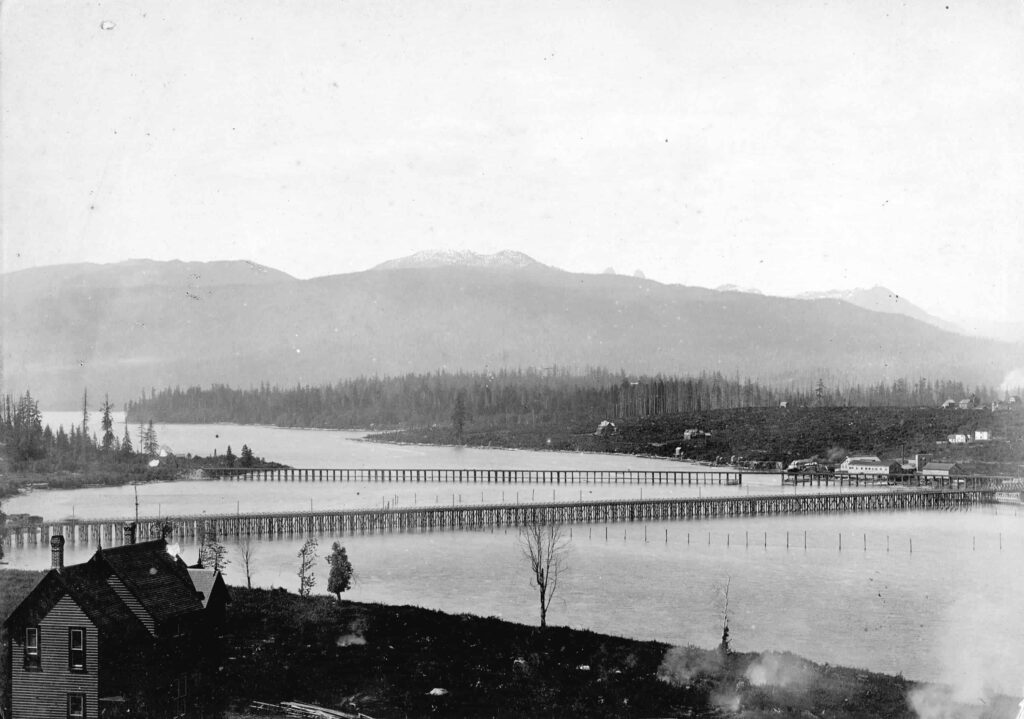
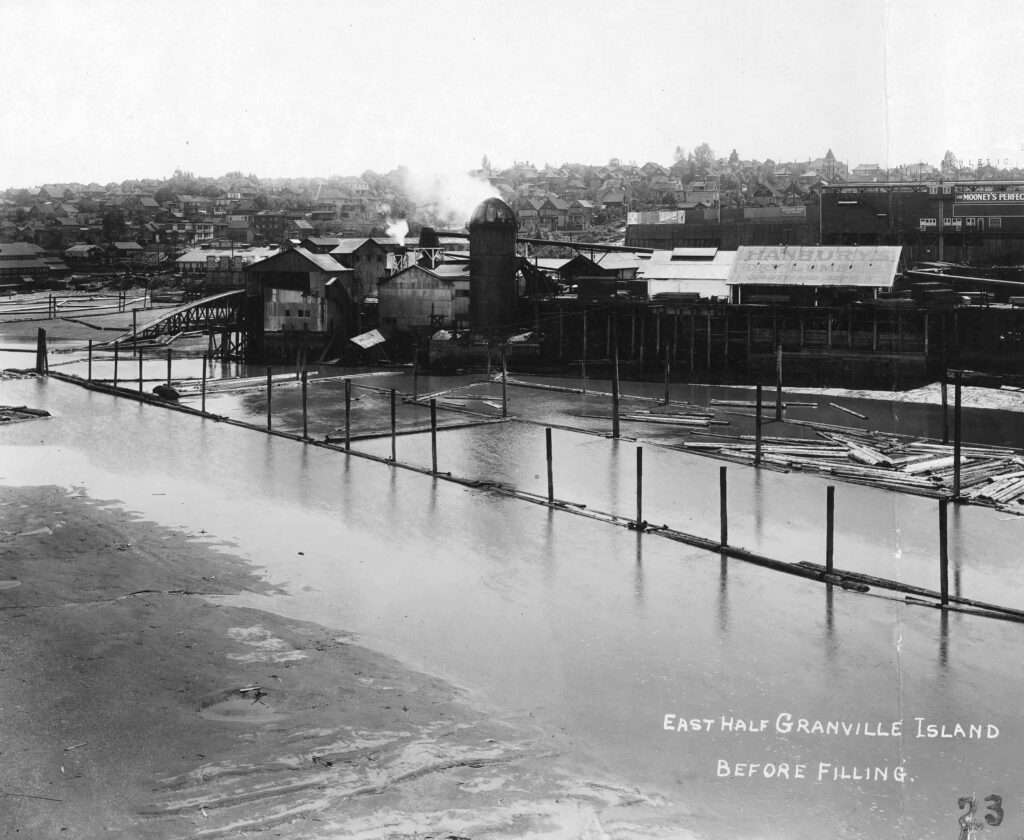
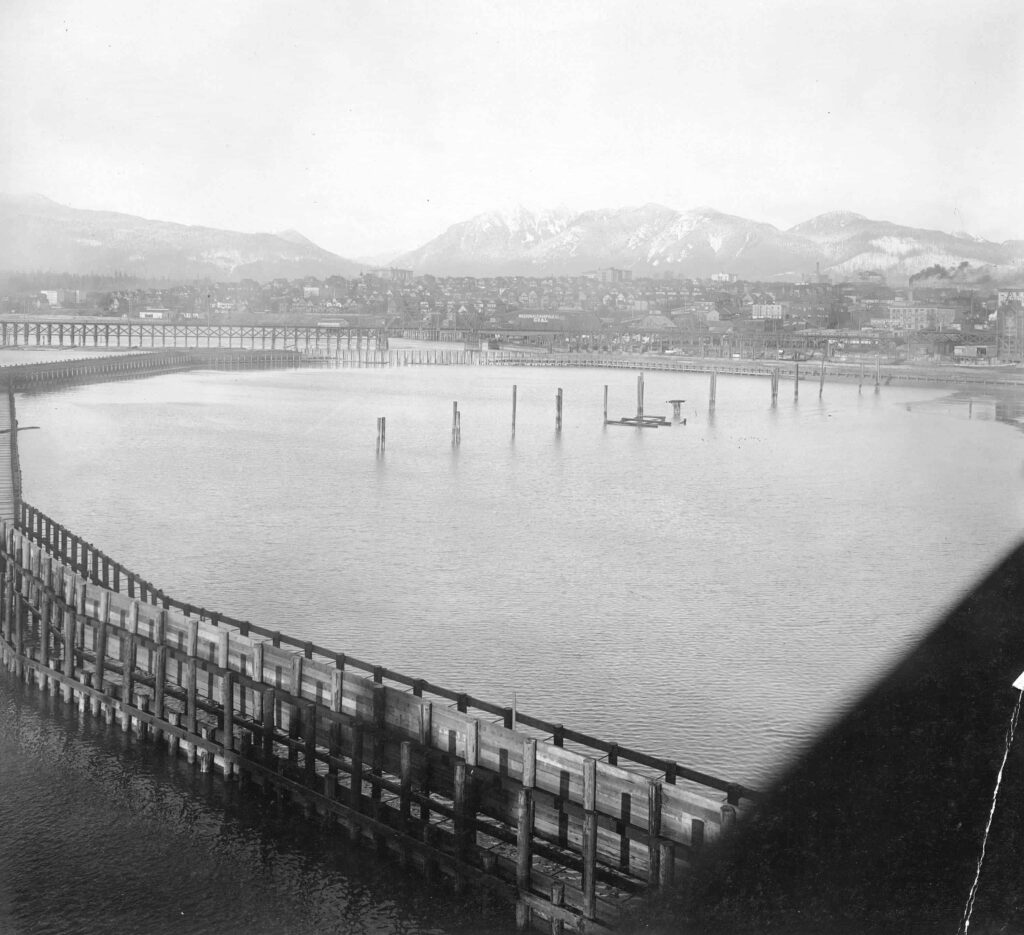
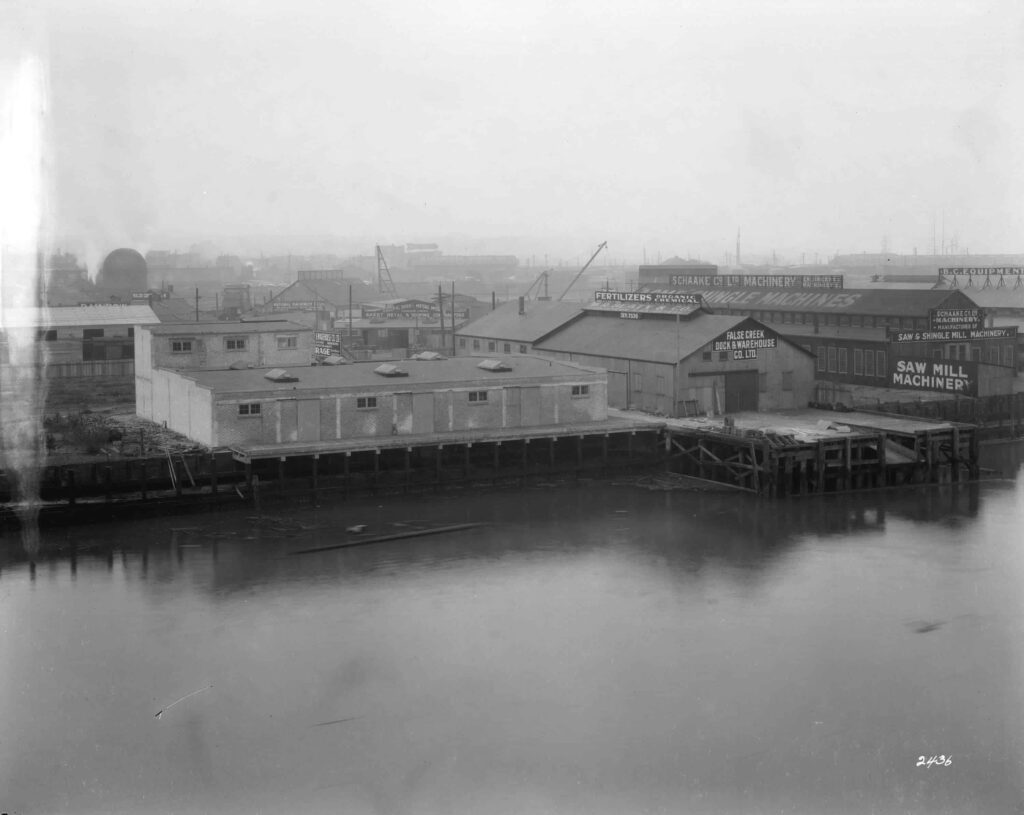
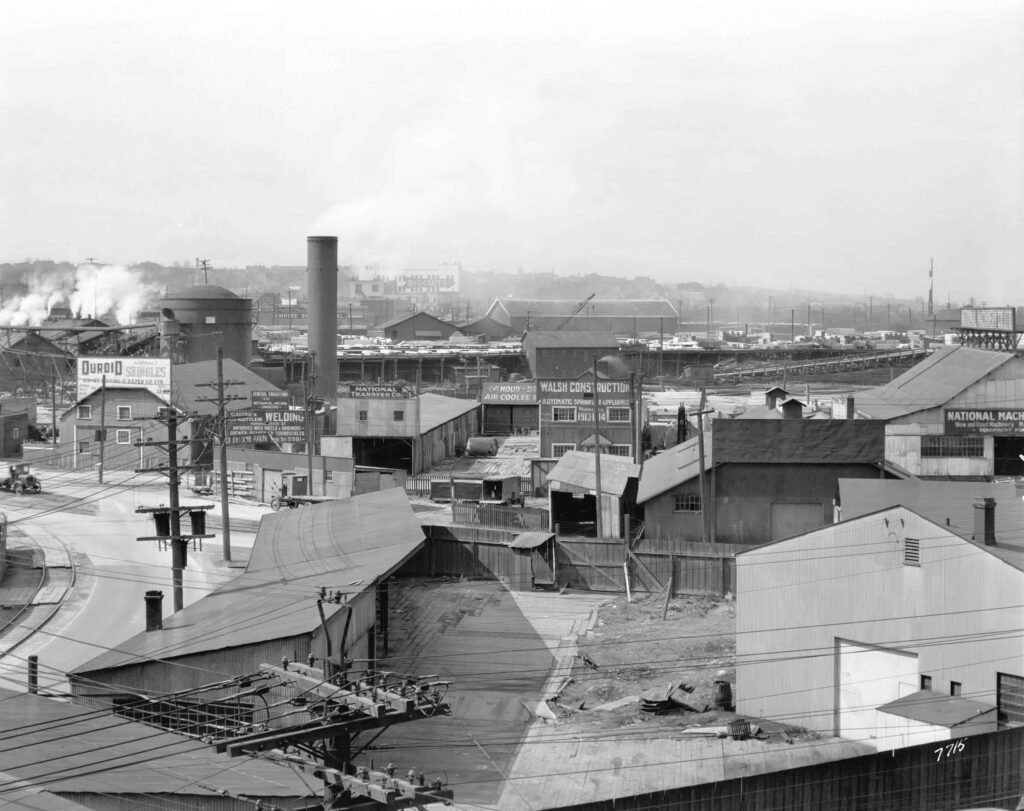
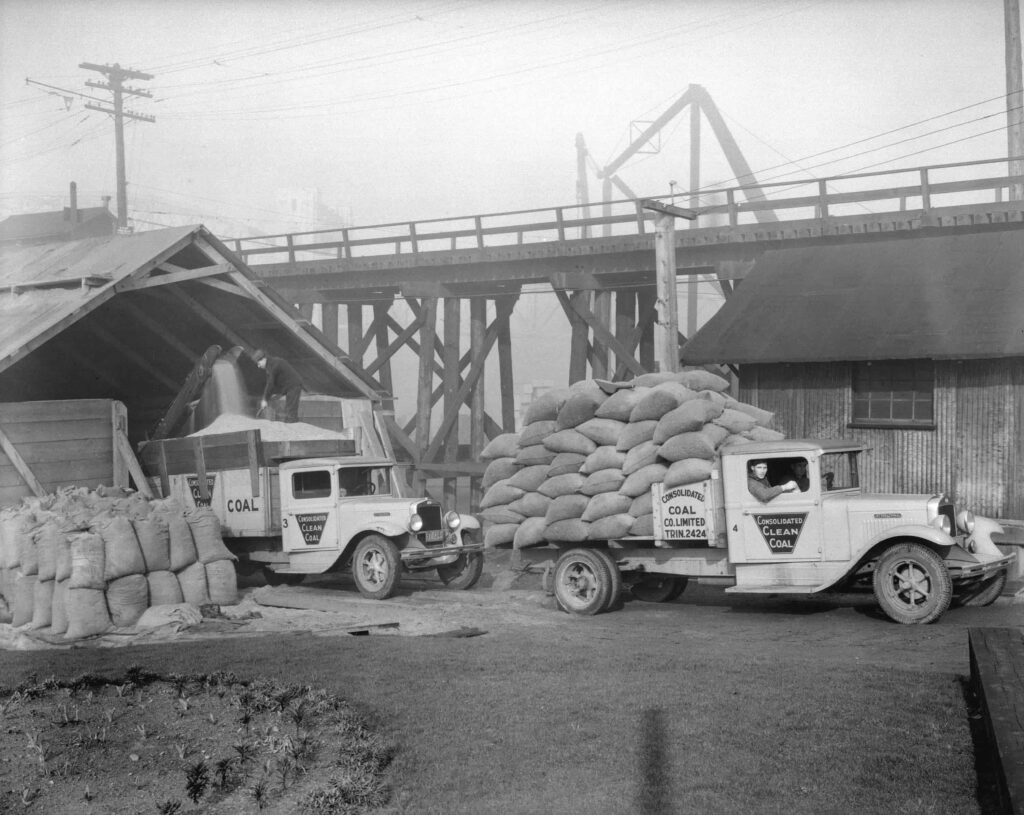
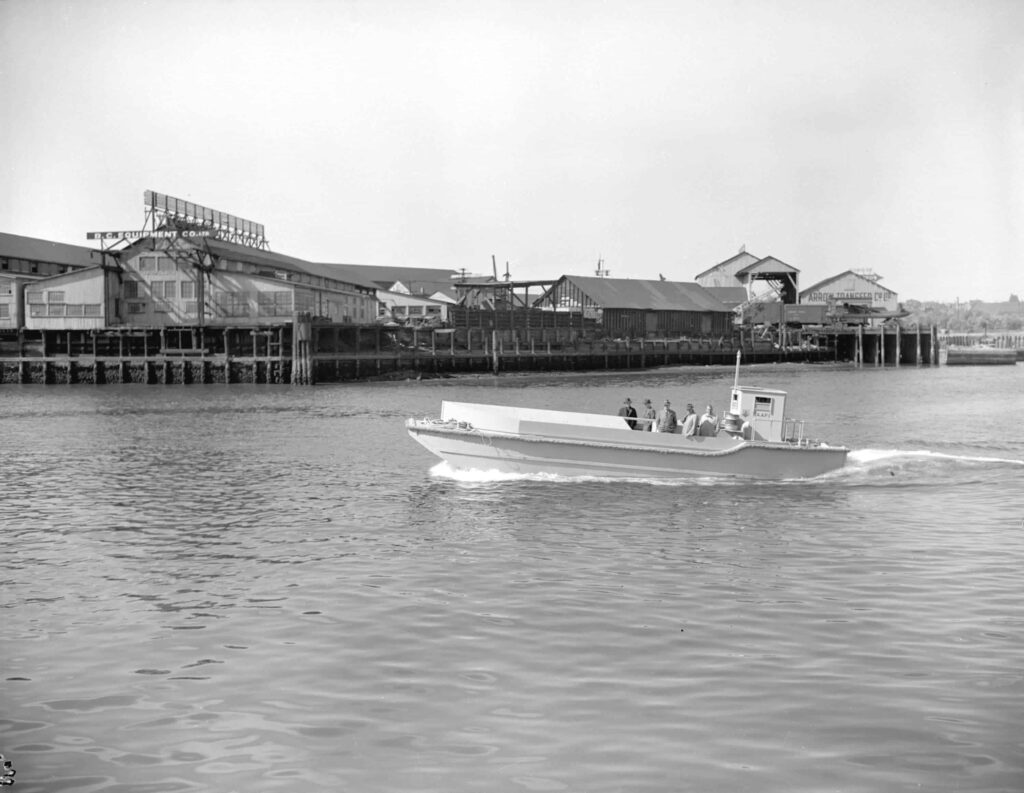
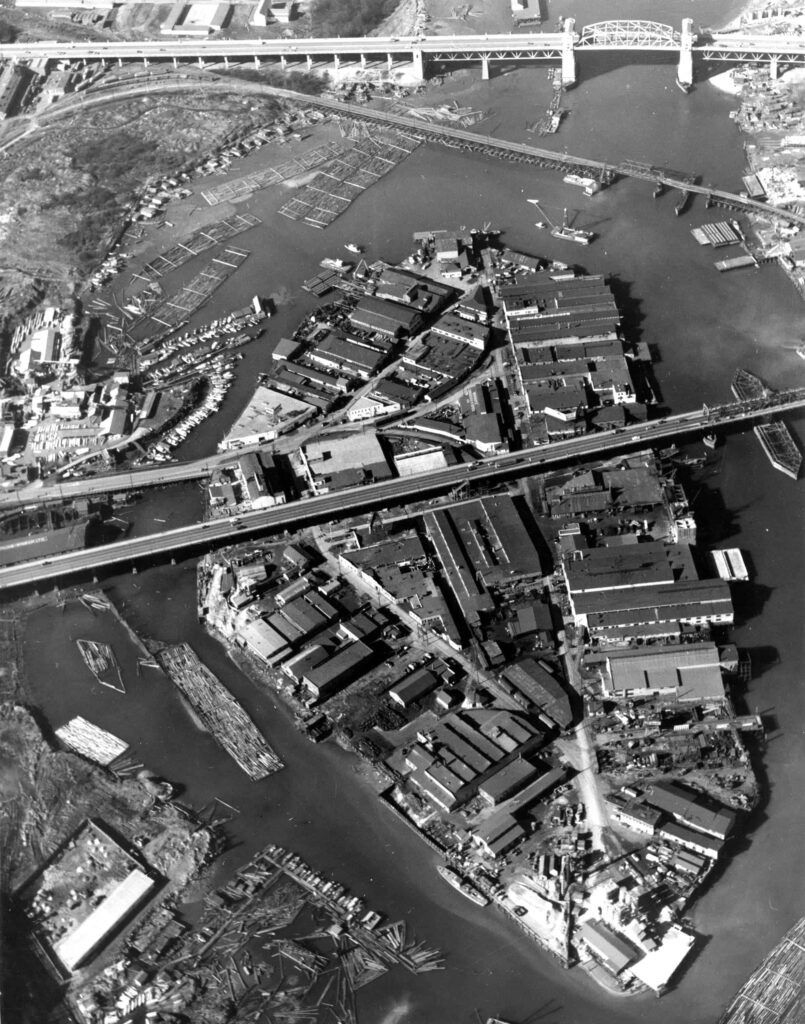
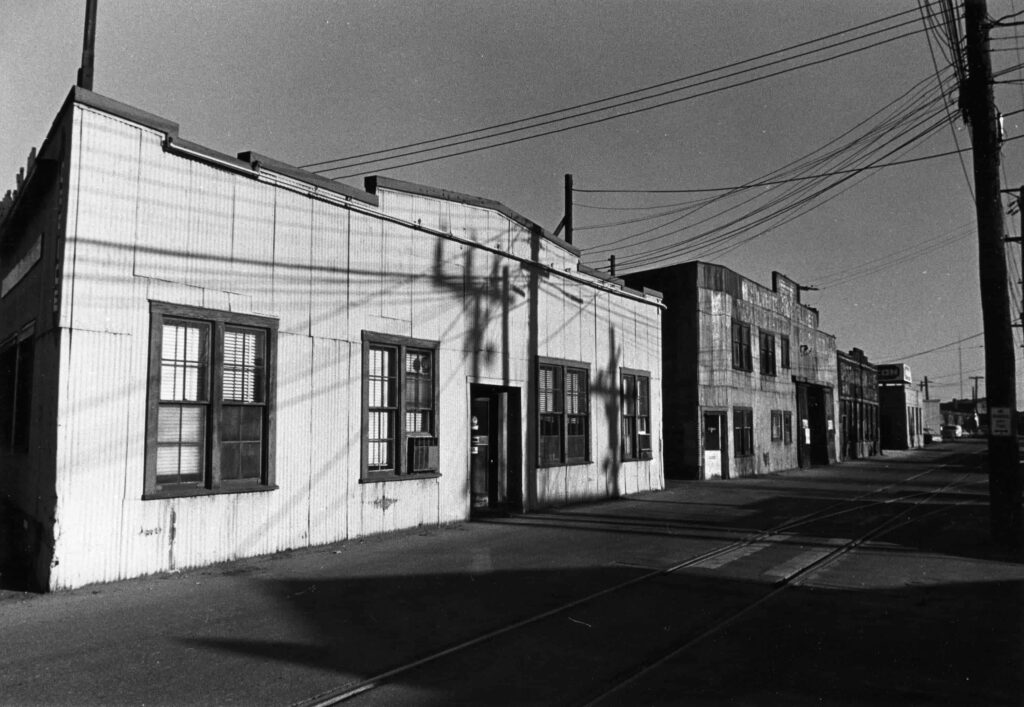
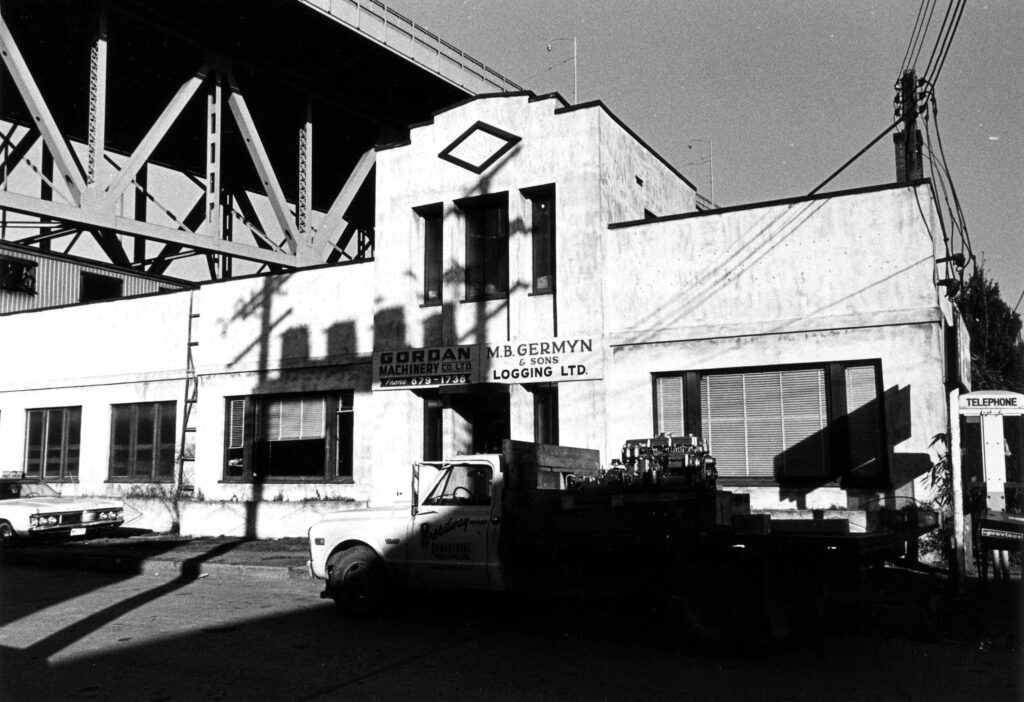
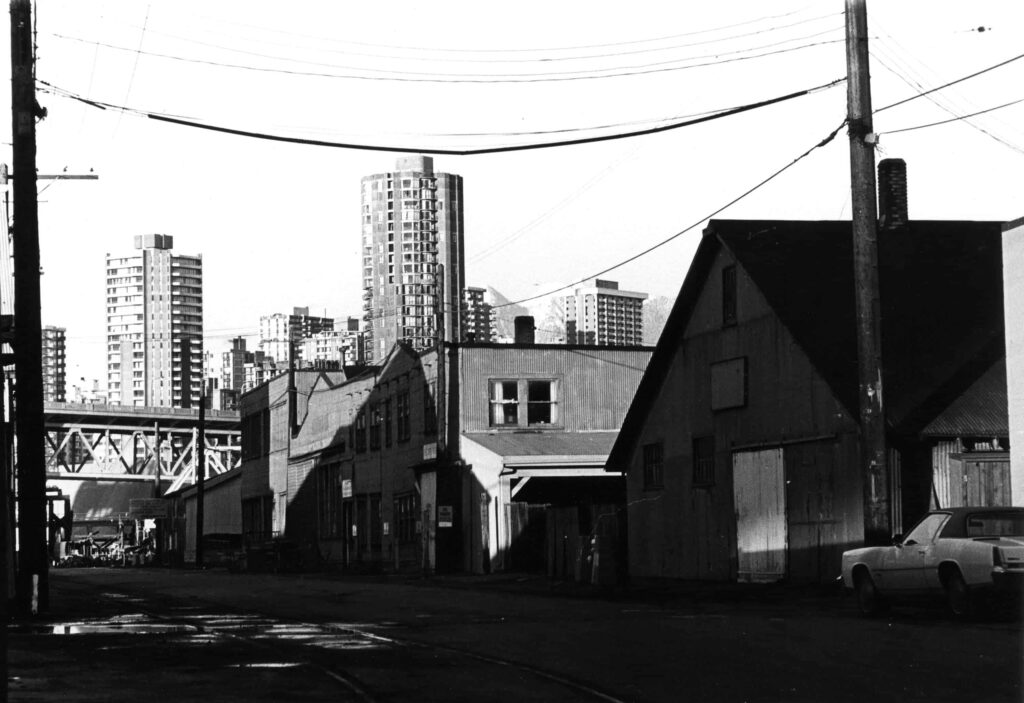
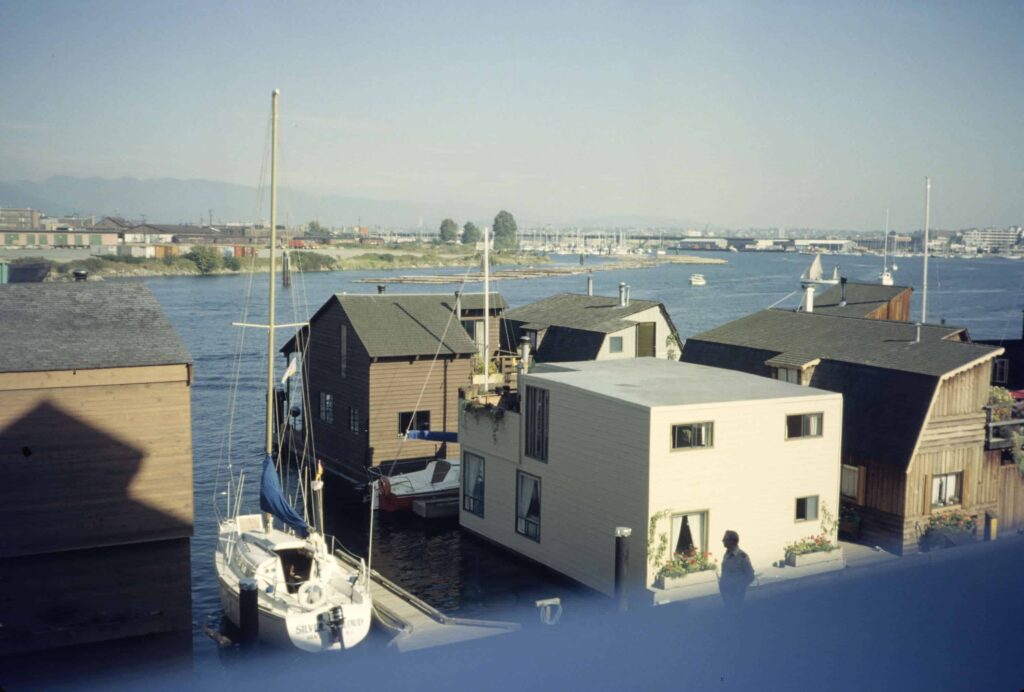
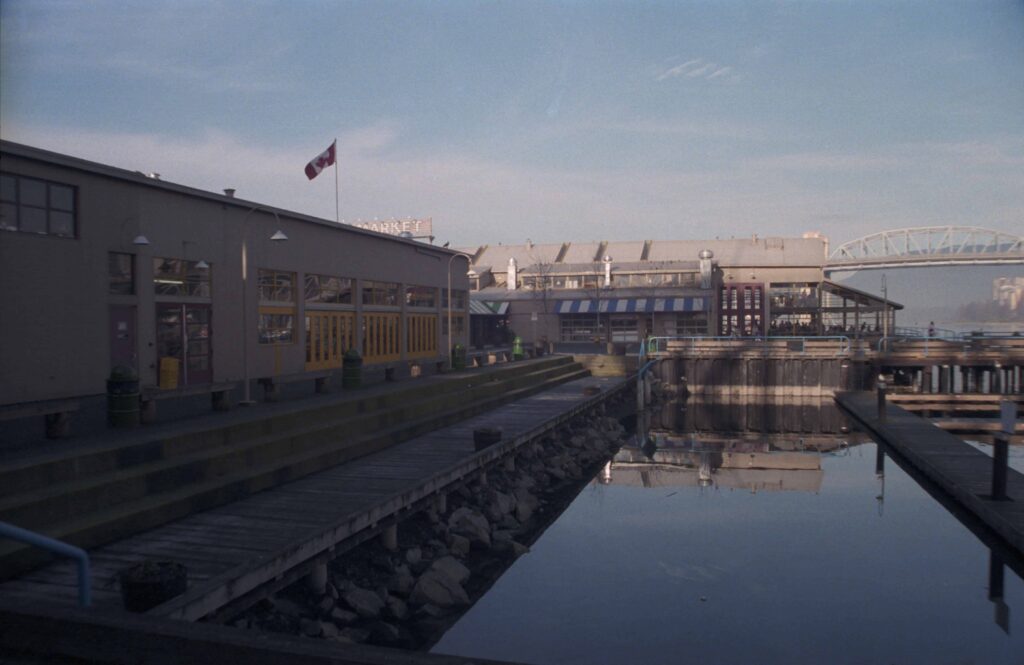
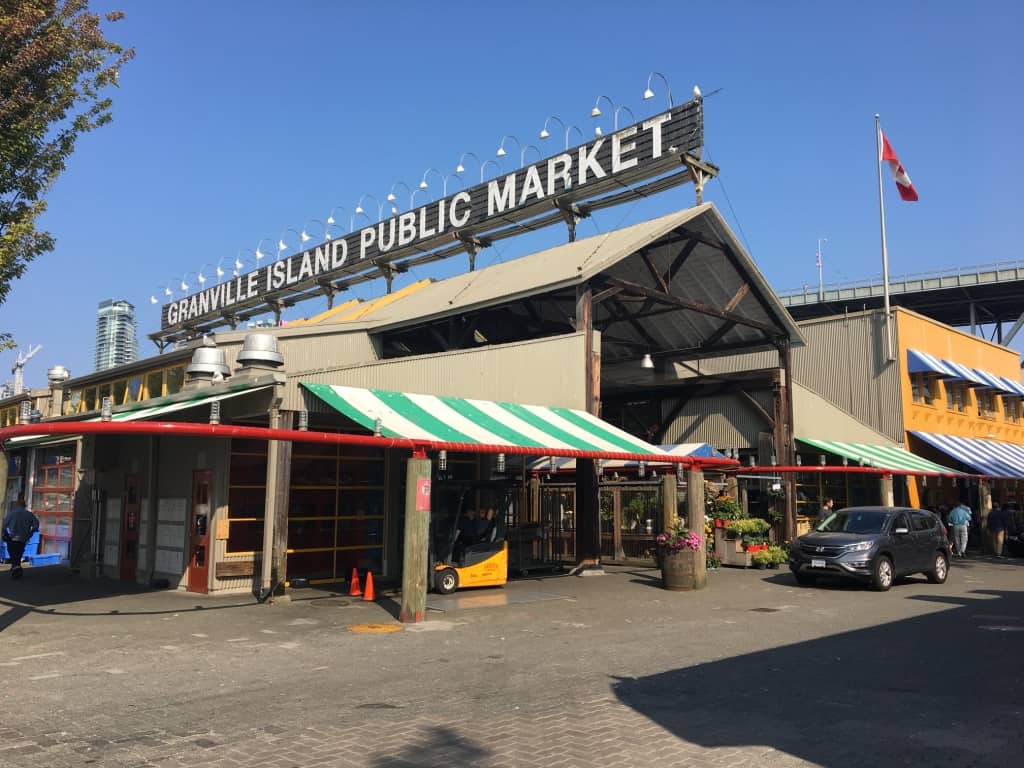
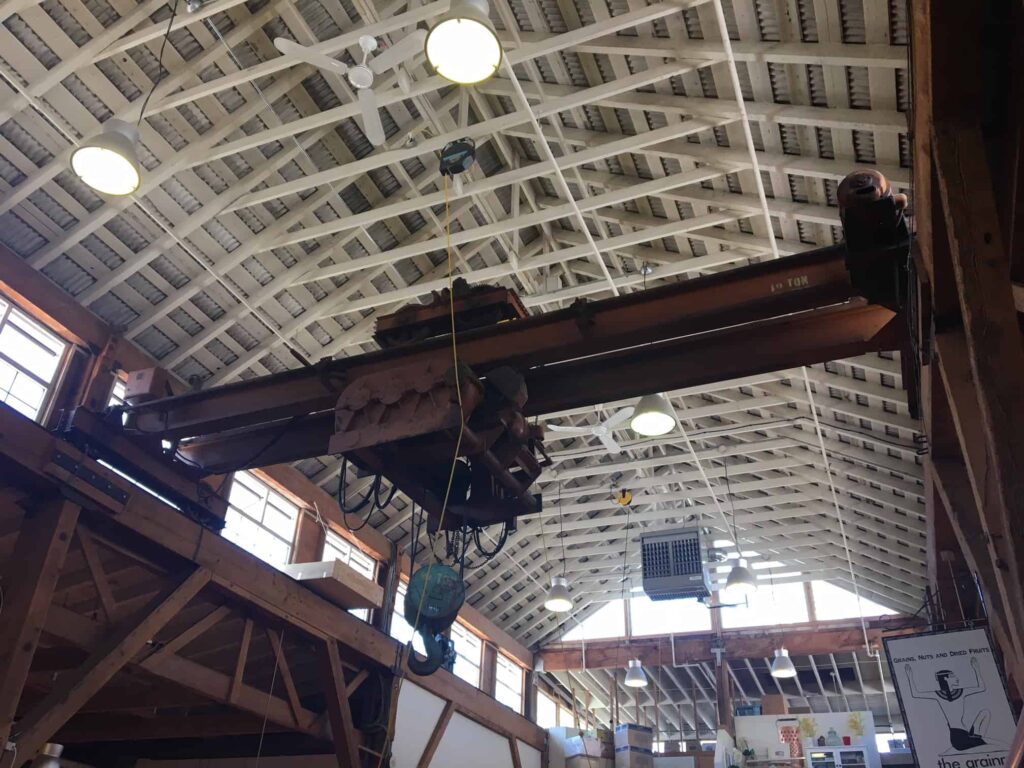
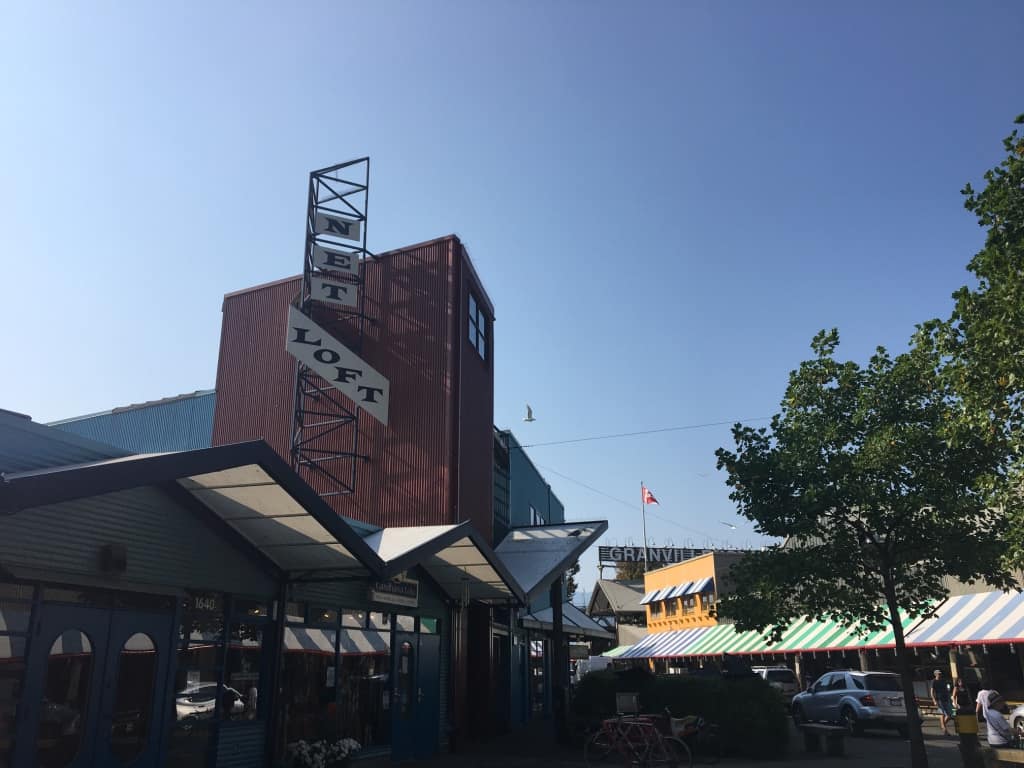
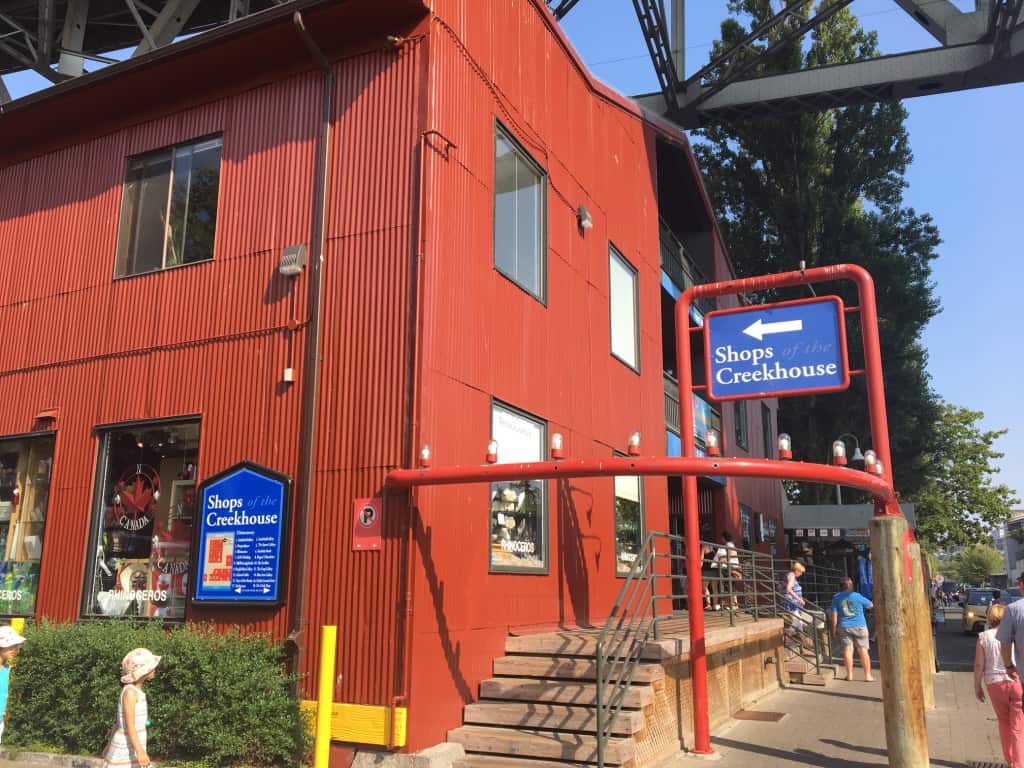
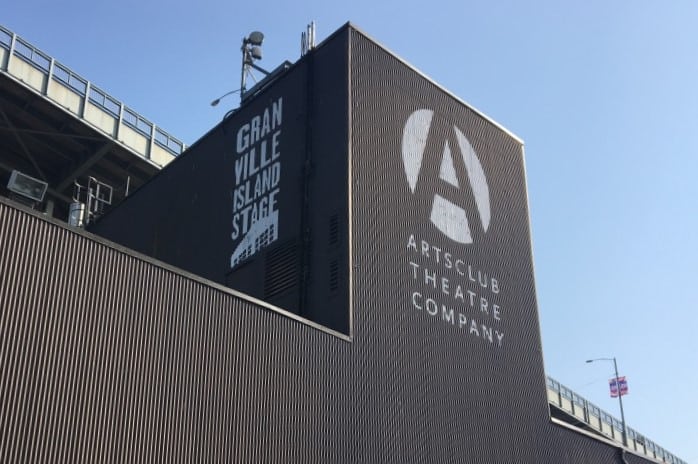
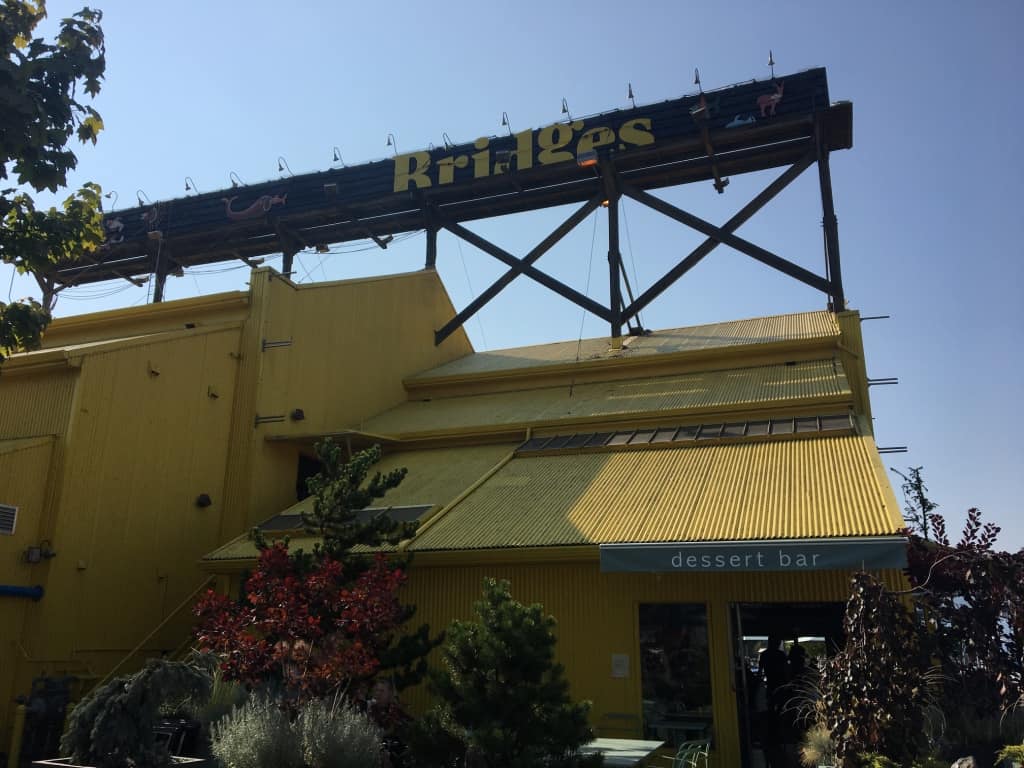
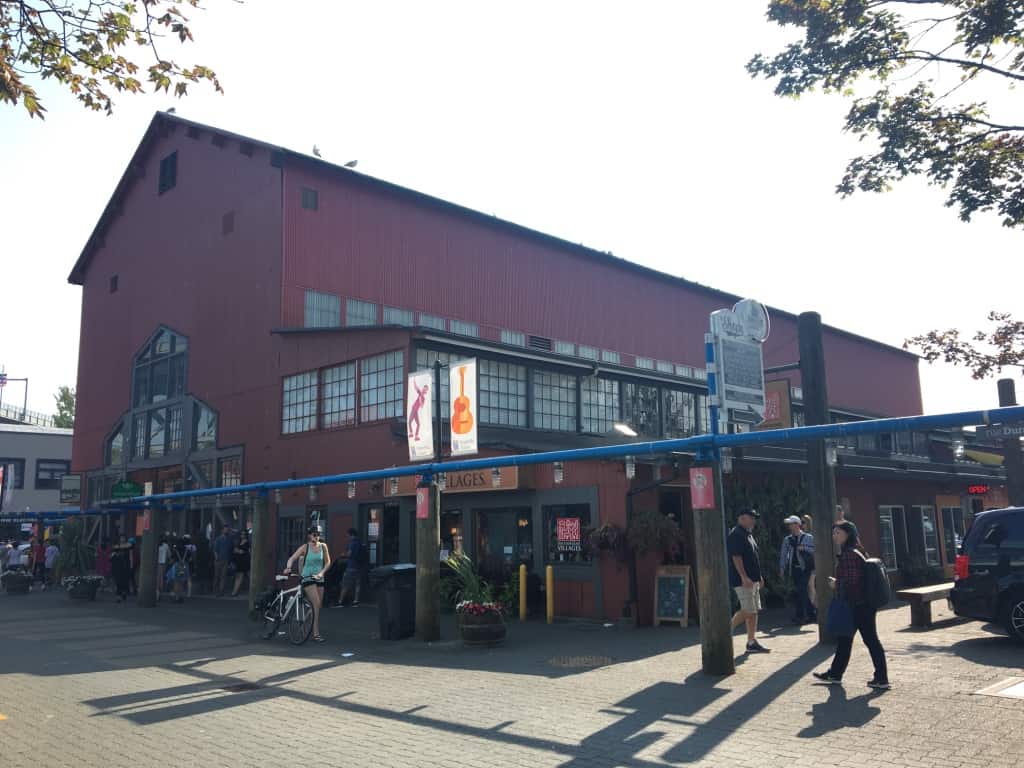
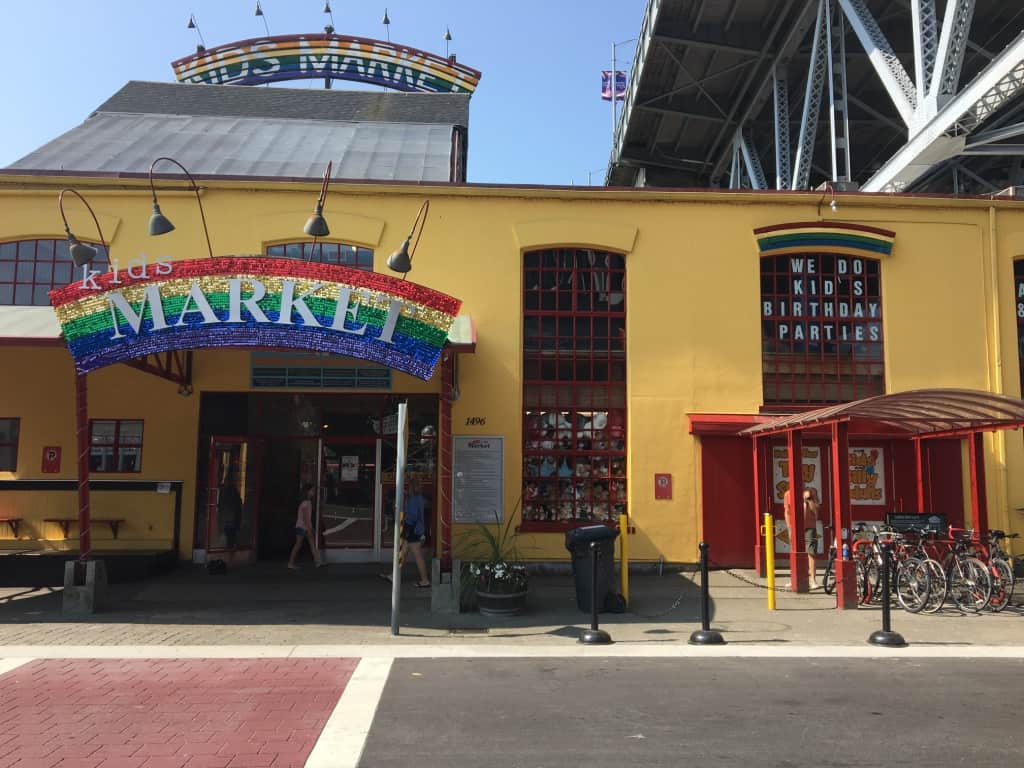
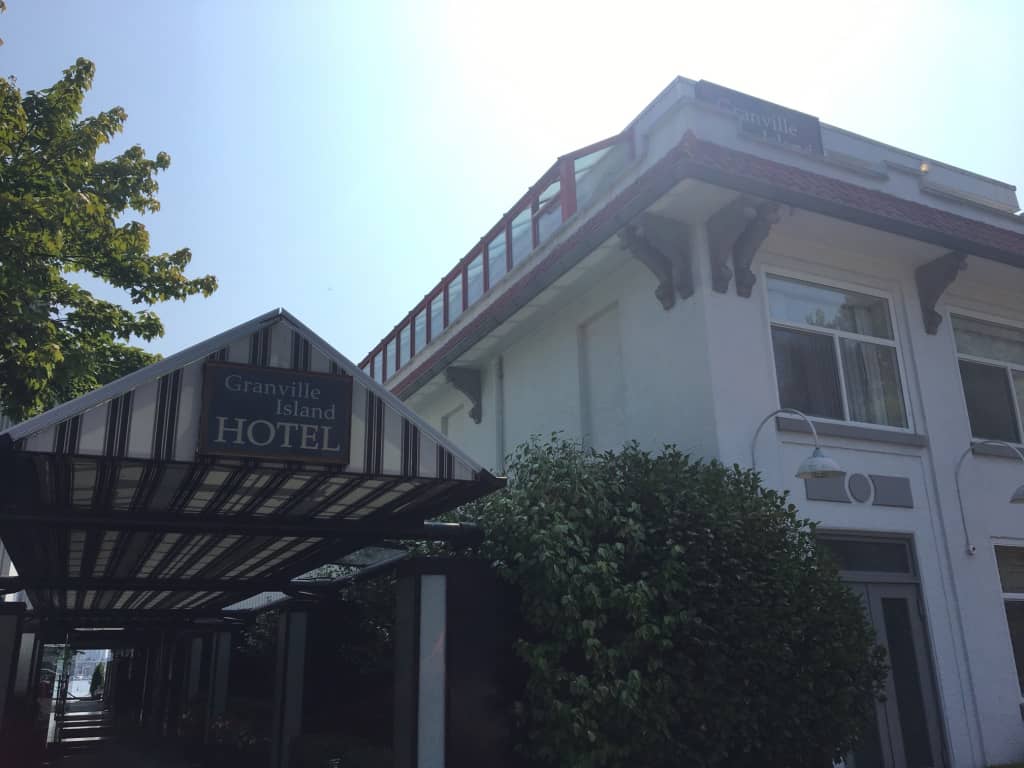
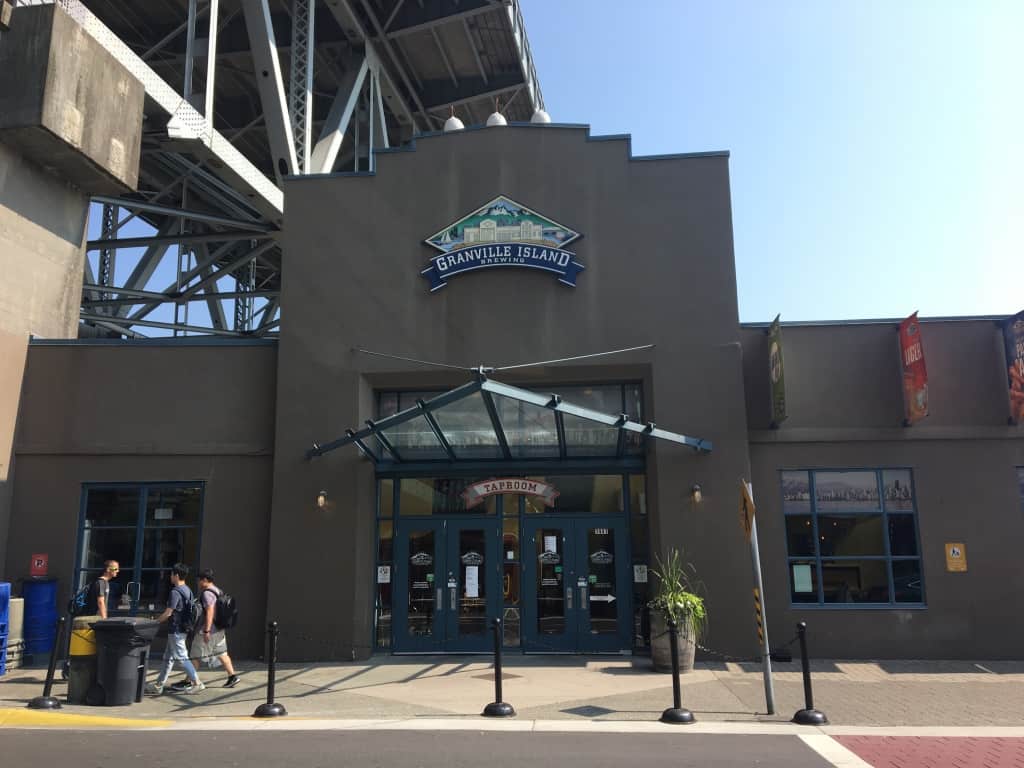
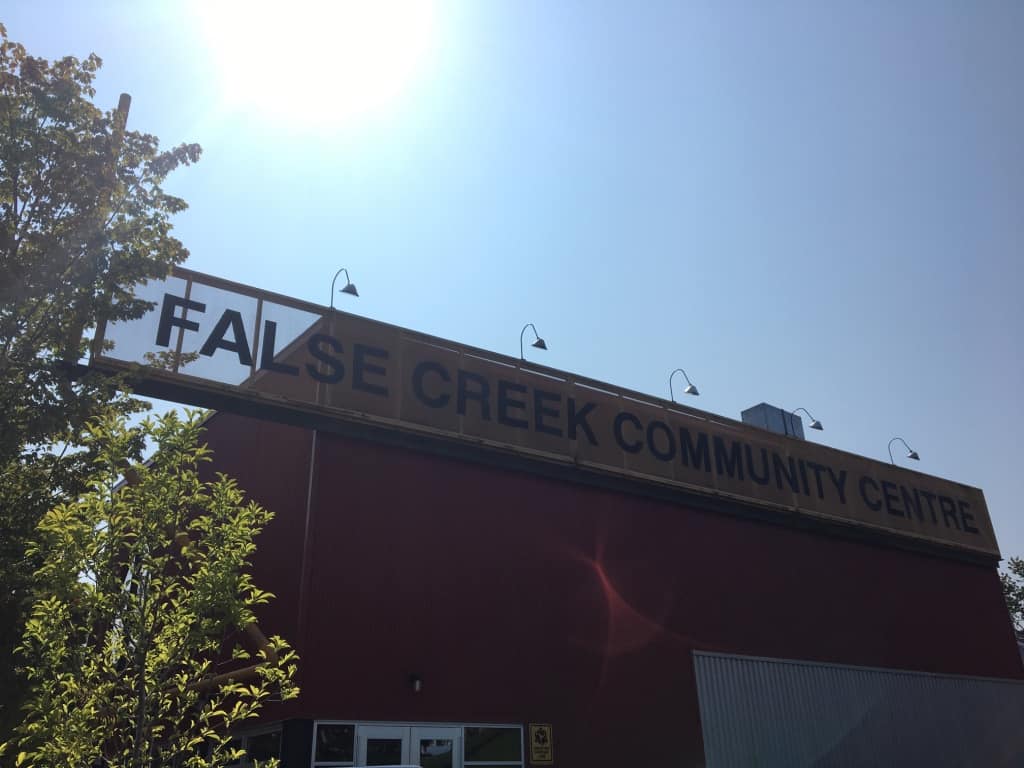
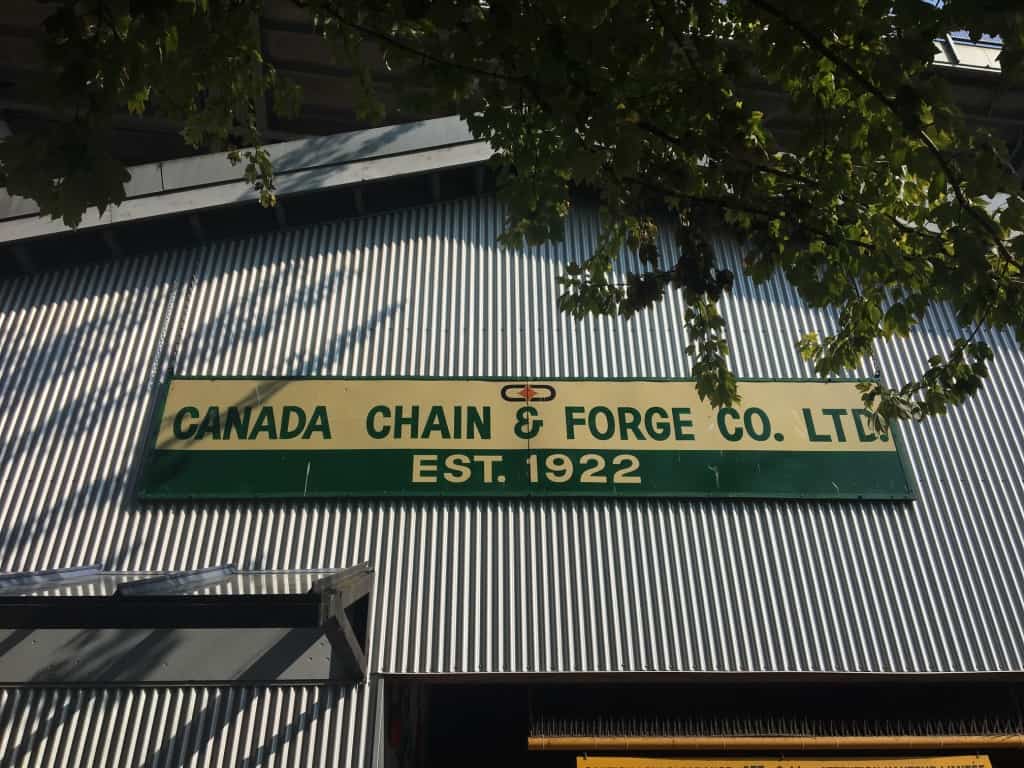
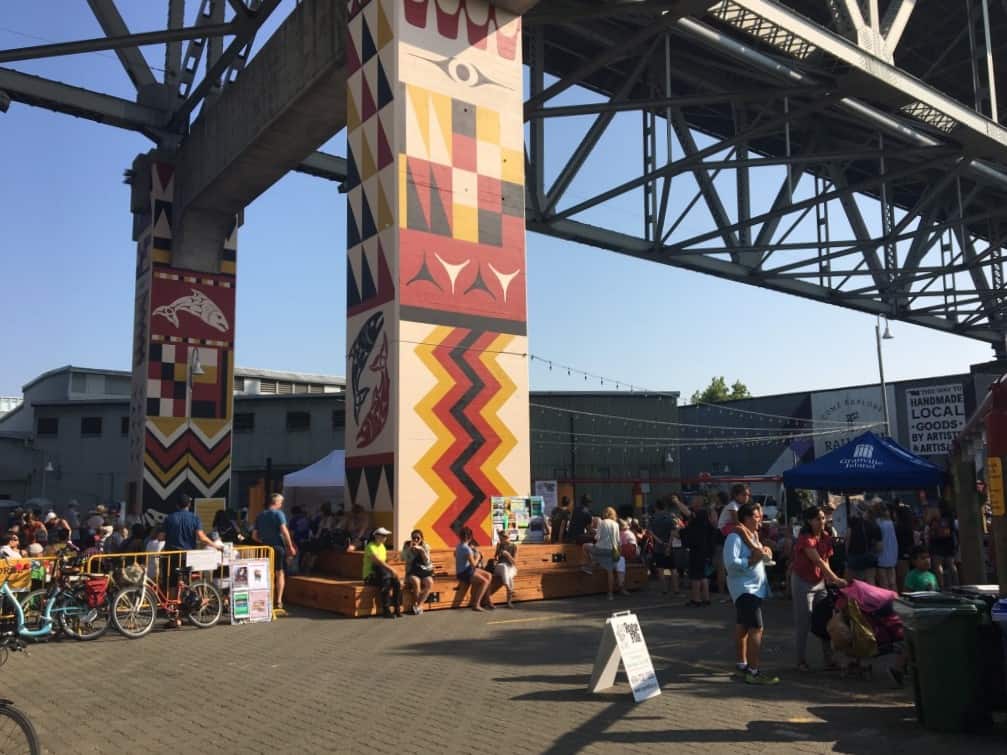
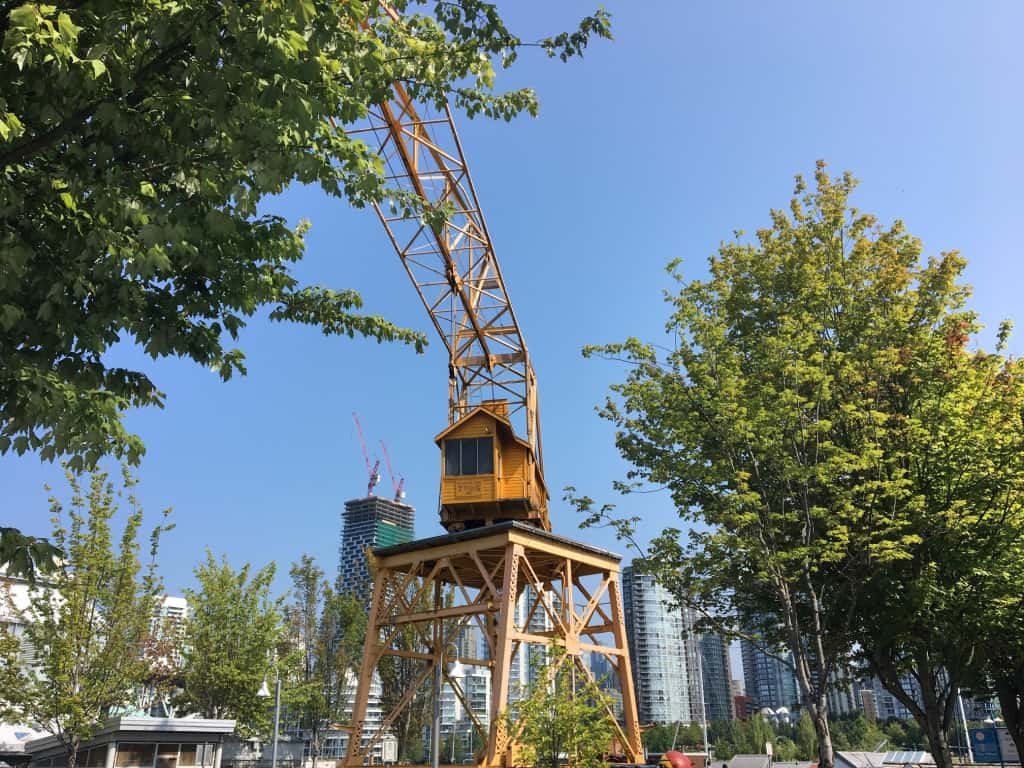
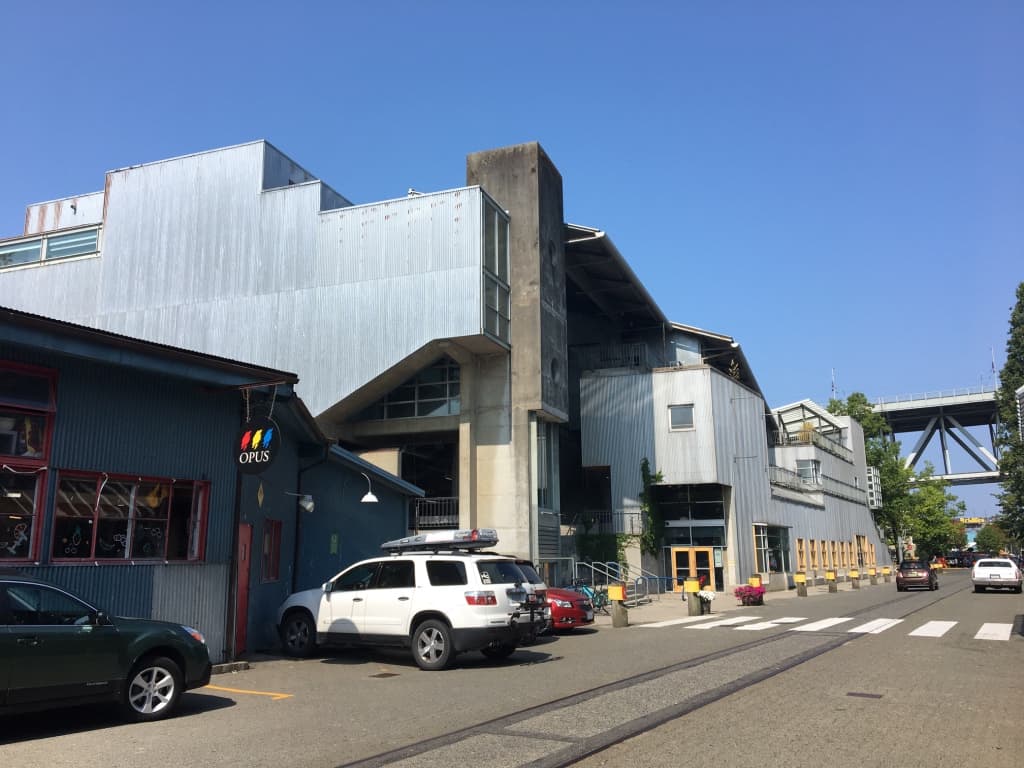
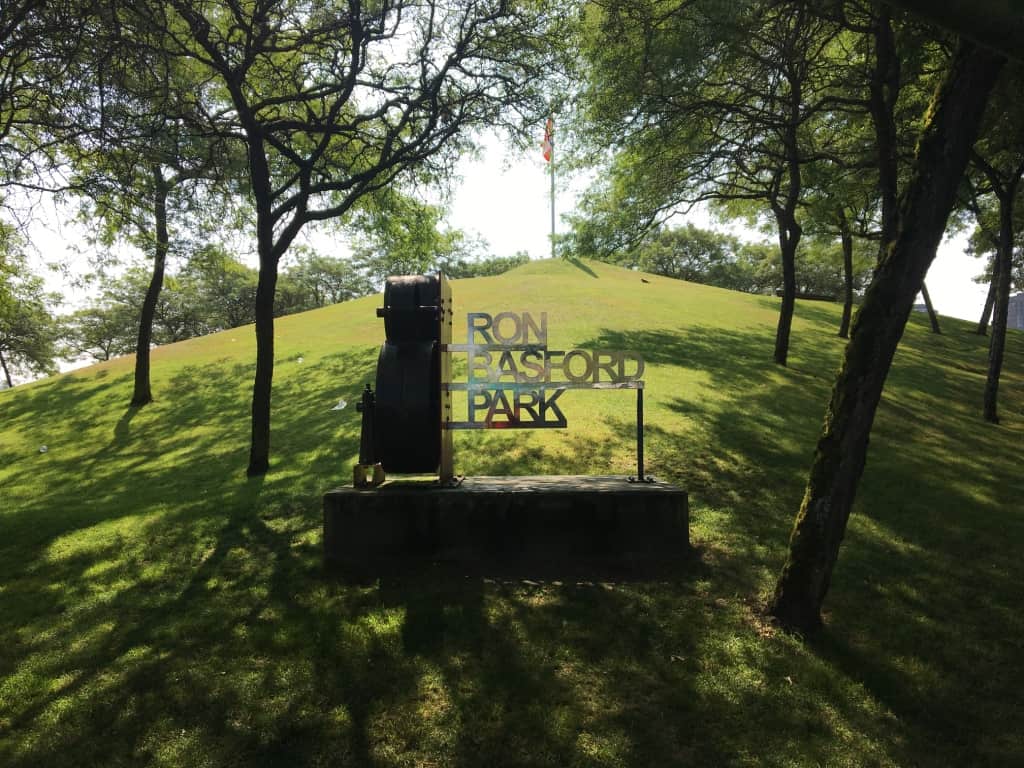
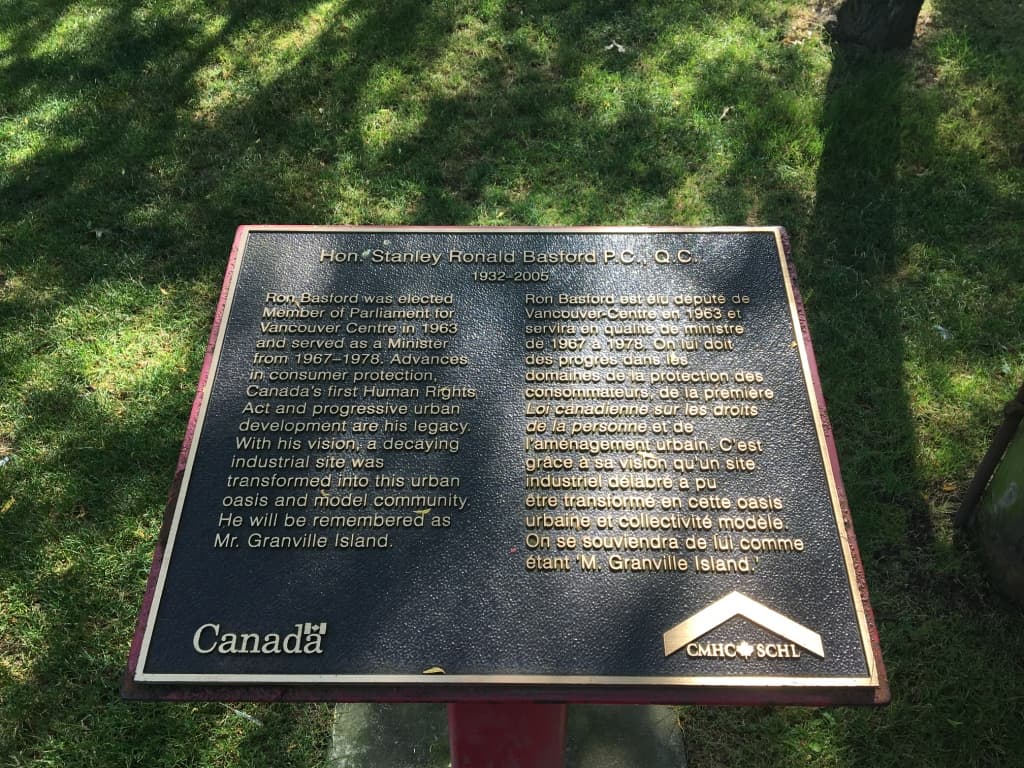
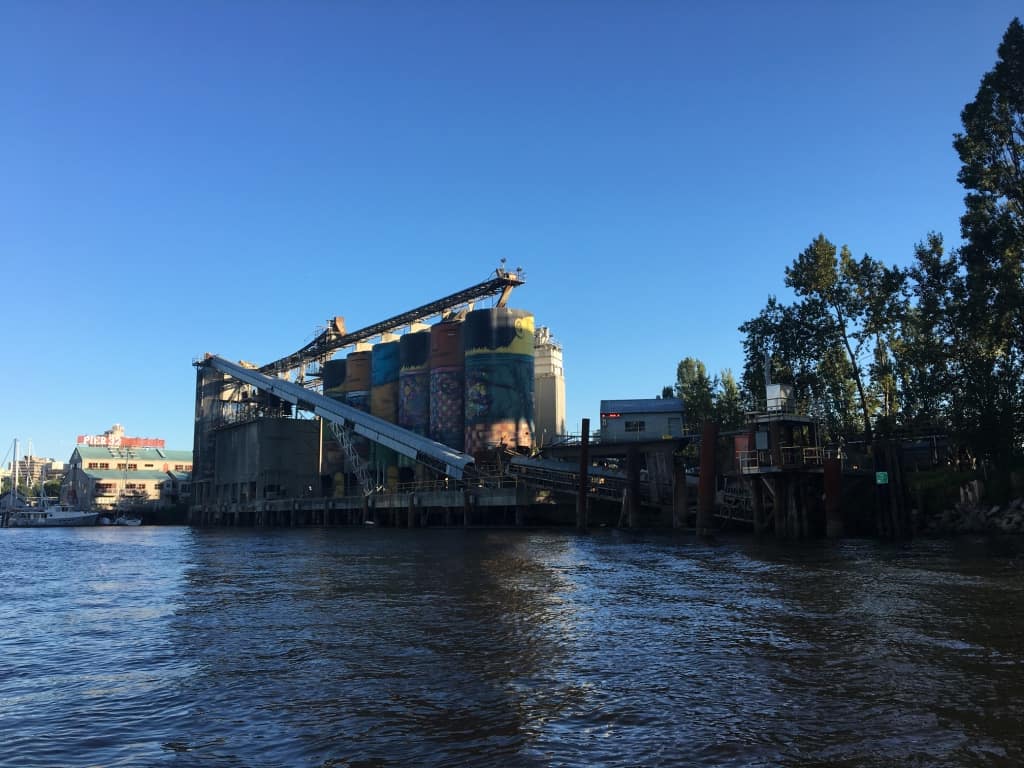
 There is no physical plaque onsite- please contact us if you are interested in sponsoring this plaque!
There is no physical plaque onsite- please contact us if you are interested in sponsoring this plaque!